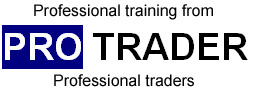The Calmar Ratio is a simple ratio used in the hedge fund industry to measure the return versus risk ratio between different funds thereby allowing a simple risk comparison of different funds results.
Whilst total return is of course very important what is even more important to most investors is the risk adjusted of risk normalised rate of return.
The Calmar is normally calculated over a 3 year look back and is given by the simple formula
Compound annualised rate of return/maximum drawdown %
The higher the Calmar ratio the better the risk/reward profile.
If over a 3 year period the annualised rate of return of fund A was 30% with a maximum drawdown % of 10% then the Calmar ratio would be 3.
Whilst if the rate of return was 45% with a maximum drawdown % of 30% then the Calmar ratio would be 1.5.
Whilst the latter fund produces the highest total return (45%) it produces the lower Calmar ratio indicating greater normalised risk (in terms of return to maximum drawdown) than the former.
An even simpler ratio that gives a very quick measure of pain versus gain for shorter term emini trading systems such as those taught on the Protrader automated trading course is the Payback Months ratio.
In this case you take the maximum drawdown and divide it by the average monthly return over a specified period of time.
Assume a system averages $500 per month but has had a maximum drawdown of $2,000 then the Payback Months would be 4. This simply means that you could happily make your average monthly return for 4 months and then give it all back if you were unlucky enough to hit the maximum drawdown figure.
In the case of Payback Months ratio lower numbers indicate a better risk/reward profile. Therefore a system where the Payback Months is 2 months is far superior to one where the ratio is 10 months.
Both Calmar and Payback Months “normalise” returns relative to risk (as defined by maximum drawdown) and make it much easier to draw meaningful risk/reward comparisons between funds or systems that perhaps are generating widely different levels of absolute return.
It is always essential to choose a system that has a risk return profile appropriate to your requirements rather than just go for the one that makes the most absolute Dollars per Month.

